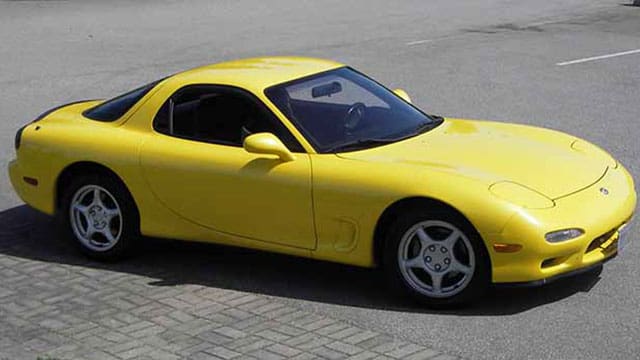The third-generation Mazda RX-7 was a favourite among motorsport enthusiasts

A 1993 Mazda RX-7: its Wankel-inspired rotary engine pumps out enormous amounts of power with comparatively small displacement. It originally came in five colours, including “competition yellow mica.” Behind the wheel, the car’s performance is intoxicating.

Here’s a look at a nearly forgotten classic and one of my favourite cars– one that got away from me and I really wish I’d kept: the third-generation Mazda RX-7.
In the 1990s, sales were brisk for this Japanese company. Its motorsports division was basking in the glow of winning the Le Man’s 24-hour endurance race in 1991, not to mention various other contests, including Pikes Peak in the same year and the American GTU championship.
It was all thanks to the RX-7 and its Wankel-inspired rotary engine, which could pump out enormous amounts of power with comparatively small displacement.
Despite its rather hefty price tag for the time, the third-generation RX-7 was something of a cult car right out of the gate. It was a big favourite with amateur motorsport enthusiasts, especially autocross aficionados, who loved its possibility and almost instant power delivery.
| Related Stories |
| Mazda Cx-90 Signature a high-end SUV without the luxury brand price tag
|
| 2011 Mazda CX-7 stands the test of time
|
| Mazda 3 delivers luxury in compact sedan category
|
The fact that it had a ‘happy’ rear end and substandard fuel economy wasn’t much of a deterrent to the faithful. Among its fans was Napster co-founder and Facebook partner Shawn Fanning, who apparently owned three.
It still makes a superb drift car.
With twin sequential turbochargers, the 1993 edition of the RX-7 has a 1.308-cc twin-rotor engine that pumps out a healthy 255 horsepower and 217 foot-pounds of torque.
Transmission is either a five-speed manual or four-speed automatic.
It’s strictly a two-seater hatchback, with a pair of storage bins where the back seats could have been, and a somewhat large rear hatchback that opens manually.
It originally came in five colours, and my favourite is still “competition yellow mica.”
Standard equipment includes a driver’s side airbag, power windows and door locks, an engine oil cooler, anti-lock brakes, air conditioning, and cruise control. You could also order options like leather interior, upgraded Bose sound system, and a power sunroof.
But by today’s standards, the Mazda RX-7 is pretty basic. You’d look in vain for things like a vehicle stability control system, climate control, navigation system, ventilated seats, adjustable suspension, or traction control (although it did come with a Torsen locking differential). It didn’t even have tilt/telescoping steering.
Depending on your point of view, this either adds to its overall appeal or makes it just too crude to drive on a day-to-day basis.
Behind the wheel, a few things are apparent right away. First, the car’s performance is intoxicating. Bury the pedal and it leaps away from a dead start like a startled cheetah and you can light up the rear wheels in a heartbeat.
In the rain, however, the rear wheels tend to hop when they break traction, and all that power and lightweight body construction make this iteration of the RX-7 kind of a handful in wet weather.
It will do zero to 100 km/h in about five seconds, revs to 8,000 rpm, and has a top speed in the 260 km/h neighbourhood, so this is no lightweight in the performance department.
It also features a notchy transmission, with weak synchromesh in all the lower gears, and you can grind ’em very easily if you aren’t paying attention.
This generation of the rotary engine is remarkably quiet in operation. It offers hell-for-leather performance yet idles like a purring cat at stoplights and is perfectly civilized on the highway.
However, as I recall, the oversized rear glass hatchback could pop up randomly if you drove at high speed with the windows down.
And let’s not forget the pop-up headlights. I still chuckle when I remember how they flipped up like oversized bunny ears.
The Mazda RX-8, made from 2002 to 2012, was positively bland in comparison to the RX-7 but still more interesting than just about everything made nowadays.
They definitely don’t make ’em like they used to.
Ted Laturnus has been an automotive journalist since 1976; he has been named Canadian Automotive Journalist of the Year twice and is past president of the Automotive Journalists Association of Canada (AJAC).
For interview requests, click here.
The opinions expressed by our columnists and contributors are theirs alone and do not inherently or expressly reflect the views of our publication.
© Troy Media
Troy Media is an editorial content provider to media outlets and its own hosted community news outlets across Canada.
